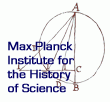The Laboratory
Ximenez's chymical laboratory was located in the attic space of his house. The inventory lists sixty-three objects (or groups of similar objects) relating to laboratory work, all of them typical for a chymical workshop of the early seventeenth century. Significantly, there is a marked absence of crucibles, cupels, casting cones, molds, muffles, stone- and earthenware retorts: in short, items necessary for working at high temperatures and with metals and minerals. This situation contrasts with other contemporaneous known sites of chymical production, such as the laboratory in Oberstocksthal, as well as with the materials specified by Andreas Libavius in his Alchemia of 1606 for outfitting a laboratory. In fact, the only chymical substances explicitly mentioned are "a large assortment of various glasses, small pots and bottles, with diverse distilled oils, waters and other substances," no mention of the ingots of metal, or the ores, minerals, acids, and salts that would be present for work with metals and minerals. Moreover, the corrosive dust and fumes customarily produced when working with metals and minerals would have made the safe storage of edged steel weapons, described as present in the same room, impossible. For these reasons we can infer that this workroom was used rarely or not at all for work with metals and minerals, but rather primarily, and perhaps exclusively, for the distillation of medical waters, spirits, and oils.
Most of the listed apparatus is designed specifically for distilling low boiling materials, such as alcohol – distilled out of wine or beer – and alcoholic cordials; water, as in medicinal waters or vegetable waters, such as water of chicory or water of melon; and the steam distillation of essential oils, like that of cinnamon or cloves. Much of the distillation apparatus is made of copper, which could not have been used for high temperatures or for distilling the corrosives common in early modern chymistry, but which was typical for making alcohols and waters – and in fact remains typical today for producing cognacs, brandies, and eaux-de-vie. The various small, portable furnaces are likewise geared especially to small-scale, low-temperature work such as the distillation of cordials and other medicines. Three further items point towards specifically pharmaceutical purposes: first, the "small wooden press," probably for pressing juices and oils out of fresh vegetable matter, second, the "small copper vyseken," namely a "physic cup" or "apothecary's cup" used for administering medicines, and third, the "alabaster mortar with a wooden pestle," which, being made of an extremely soft stone and wood, could be used for pulverizing only very soft materials such as green herbs.
This Distilleerkamer was thus used primarily for the manufacture of simple medicinal waters, cordials, and oils, presumably for the use of Ximenez's family and friends – perhaps most of all for his wife Isabel da Vega, who suffered a long illness. In this sense it most resembles the distilling house in operation at the same time at El Escorial – although on a much smaller scale – and others at contemporaneous German princely courts. In the Meir house, therefore, the branch of seventeenth-century chymistry known as chemiatria (chymical medicine) was pursued – probably both traditional and perhaps Paracelsian as well – seemingly to the exclusion of the other main branch of the subject, chrysopoeia or metallic transmutation and improvement. It is possible, however, given the books on chrysopoeia in Ximenez's library, that there might have been another locus for such work than the Distilleerkamer, perhaps a fireplace hearth for small-scale experimentation elsewhere in the house.
Literature
Von Osten, Sigrid, ed. Das Alchemistenlaboratorium von Oberstockstall. Ein Fundkomplex des 16. Jahrhunderts aus Niederösterreich. Innsbruck: Universitätsverlag Wagner, 1998.
Soukup, Rudolf Werner, and Helmut Meyer. Alchemistisches Gold - paracelsistische Pharmaka. Vienna: Böhlau, 1997.
Principe, Lawrence M., and Lloyd DeWitt. Transmutations: Alchemy in Art. Philadelphia: Chemical Heritage Foundation, 2002.
Rankin, Alisha. Panaceia's Daughters: Noblewomen as Healers in Early Modern Germany. Chicago: University of Chicago Press, 2013.


